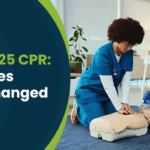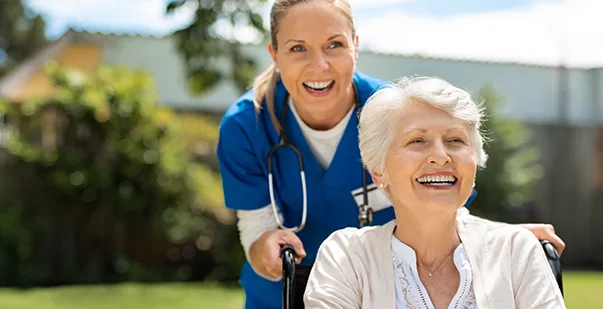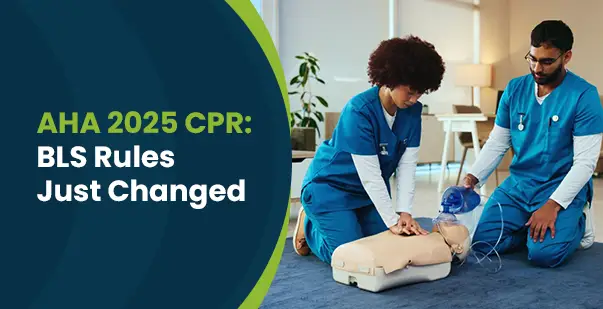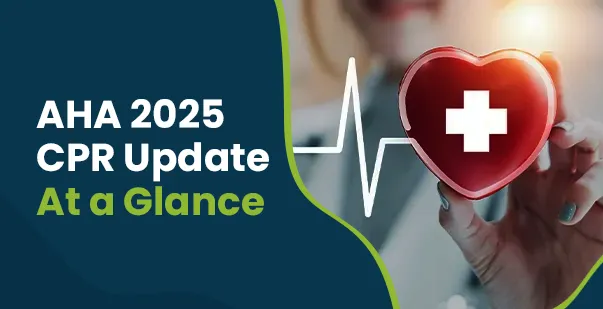The recovery position, also called the lateral recumbent position, is a key first aid technique used to place an unconscious or injured person in a safe and stable posture. When applied properly, it can be life-saving. Research shows that using the recovery position significantly reduces the likelihood of hospital admission, with an adjusted odds ratio (OR) of 0.28.
Any first aid responder must understand the importance of this position and correctly apply it to improve medical outcomes. Learning to maximize the recovery position will help you improve your capacity to deliver possibly life-saving treatment in an emergency. In this blog, we will discuss what exactly is this life-saving position and when to use it, among other things.
What is the Recovery Position?
The recovery position is a specific body posture in which an unconscious person lies on their side. This positioning guarantees that the person’s airway stays open and free from obstructions, enabling free breathing and lowering the risk of airway blockage.
The recovery position is performed for those who are unconscious but still breathing. Sometimes, it would be reasonable to return a patient to the supine (lying on the back) position if the recovery position makes it difficult to check vital signs. However, it depends on close observation of airway patency and breathing adequacy. Any first aid responder must be able to determine whether the patient requires a recovery position and must be able to help them execute it during emergencies.
When to Use the Recovery Position?
The recovery position is recommended for use when a person is unconscious and has no other injuries or conditions. If the person seems to be struggling to breathe or can’t breathe at all, do not use this position and call for help immediately. Here are certain scenarios when this position can be beneficial:
- Unconscious but Breathing
When a patient is unconscious but still exhibits normal breathing, the recovery position should be followed. This is important to avoid choking on vomit or having the airway closed by the tongue. The recovery pose keeps the patient’s airway wide and unrestricted, therefore enabling them to breathe freely and lowering their risk of suffocation or any pulmonary complications.
- Post-Seizure or Intoxication
Additionally, the recovery pose can be used for patients who have lost consciousness from seizures, intoxication, or other non-life-threatening conditions. For example, someone who has passed out due to high alcohol consumption should be placed in this posture to guarantee their safety until assistance arrives. However, alcohol poisoning can cause severe harm, including permanent brain damage or even death. The first priority should always be to call 911 or emergency services for immediate help.
Read More: History Of CPR: When Was CPR Invented?
Importance of the Recovery Position
The recovery position is a crucial first aid technique that can save lives in emergencies. Let’s explore why this posture is so important during emergency aid:
- Airway Protection
The recovery position primarily helps to keep the open airway when the patients cannot regulate it themselves. The likelihood of choking on vomit or other fluids with this posture. In unconscious people, this posture helps prevent the tongue from slipping back and obstructing the throat, a common cause of airway restriction. Maintaining continuous breathing and the oxygen flow to important organs depends on keeping the airways free.
- Prevention of Aspiration
The recovery position helps drain fluids, such as saliva, vomit, or blood, from the mouth. When placed on their side with the head down a little, gravity assists in clearing the airway and prevents or decreases the amount of fluid entering the lungs. This is crucial because when foreign substances like vomit or saliva are inhaled, they can lead to aspiration, a serious condition where the lungs become contaminated. Aspiration can result in infections like aspiration pneumonia, a potentially life-threatening respiratory problem.
Moreover, the body’s posture in the recovery position also keeps the airway free and unobstructed, considerably reducing the risk of breathing difficulties and improving the patient’s overall safety.
- Stabilization and Comfort
The correct posture not only lowers the possibility of choking but also helps stabilize any existing injuries to prevent further damage. When waiting for medical attention, this offers the unconscious person a more comfortable posture. The recovery posture lowers limb pressure and helps preserve body temperature, lowering the risk of circulation disorders.
- Facilitates Monitoring
Placing someone in the recovery position allows first responders to check their breathing and overall condition easily. This position helps them notice any changes and decide on the best treatment. It also makes it simple to monitor pulse, breathing, and other important signs, ensuring that any worsening condition is quickly spotted and treated.
- Legislation and Training
The recovery position is an important part of first aid training. Laws in many nations support it and highlight its crucial role in emergency response. For example, UK legislation has made it mandatory for employers to provide sufficient first aid training at workplaces, including the knowledge of the CPR recovery position.
Read More: How to become CPR certified?
How to Perform the Recovery Position?
Despite its immense importance in emergency medical treatment, the recovery posture is an easy pose to understand and execute. Let’s learn more about how to arrange your patient in this pose:
- Assess the Scene
Safety Check: Before you approach the individual, make sure the situation is safe for both the victim and the rescuer. Look for hazards such as traffic, fire, or unstable structures that could pose a threat.
Scene Safety: If the surroundings are dangerous, do not try to relocate the individual unless necessary.
- Check Responsiveness
Gentle Stimulation: To test responsiveness, gently tap the person and shout. If there is no response, proceed with the next steps.
Pain Response: Apply a gentle pain stimulus, such as pinching the earlobe or rubbing the sternum, to further measure the level of consciousness.
- Call for Help
Emergency Services: Call for emergency medical help right away if the person is not responding to your treatment.
Stay on the Line: Until help arrives, stay on the phone to update the dispatcher and get instructions on how to care for the patient.
- Positioning
This is a critical step when using the recovery position as first aid. Responders should be aware of how to position the victim properly to prevent further injury or complications. The following are a few ways to position the patient correctly.
- Roll the Person onto Their Side
Careful Handling: Roll the person onto their side, looking at you. Use a gentle, controlled motion to avoid causing injury.
Supporting the Head and Neck: Supporting the patient’s head and neck, gently roll the person toward you by placing your hand on their far shoulder and hip.
- Extend the Nearest Arm
Arm Placement: Extending the arm closest to you straight out from the body creates a stable base for the head to rest on. Make sure the arm is rested comfortably to prevent too much pressure on blood vessels and nerves.
- Bend the Far Arm
Support the Head: Place the patient’s other arm under the side of their head to support it, and bend it at a straight angle with the palm facing upwards. This arm posture serves as a cushion, keeping the head from pressing straight down.
- Bend the Far Knee
Leg Position: Lifting the person’s knee furthest from you slightly will help to stabilize their position. This keeps the person from sliding back or onto their stomach. The bent knee guarantees extra support, therefore helping the person stay in the position.
- Ensure Proper Head Position
Airway Maintenance: Gently lift the patient’s head and tilt it back to ensure proper airway flow. Additionally, check for any signs of choking, wheezing, or airway obstruction.
- Monitoring
Continuous Assessment: Track the person’s pulse and respiration constantly as you wait for medical assistance to come. Look for any changes in their condition; if needed, be ready to offer further help. It is crucial to monitor for signs of cardiac arrest and be ready to perform recovery position CPR if the person stops breathing.
Check for Breathing: Look for movement in the chest. Feel for breath on your cheek and listen for the sounds of breathing to ensure the patient has no airway obstruction.
How to Perform the Recovery Position on Infants?
Recovery posture for infants calls for a different technique than that of adults or older children. In addition to keeping the infants’ airways clear, the recovery posture is meant to offer the required support for their fragile bodies. Here’s a step-by-step guide to safely position an unconscious but breathing infant:
- Cradle the Infant
Keep the baby in your arms, and make sure its head points down on its side. This position helps prevent suffocation by allowing any vomit or fluid to drain away from the airway. Gently support the infant’s head and neck to maintain this important angle.
- Monitor Vital Signs
Until medical help arrives, constantly monitor and note the infant’s vital signs, including their degree of alertness and breathing. If the infant stops breathing, begin the infant CPR recovery position immediately.
- One-Handed Support
Placing your fingers to support the baby’s neck and jaw can help you adopt a one-handed recovery stance. This lets you keep the baby safe while freeing up one hand for other chores like calling for assistance or checking vital signs.
- Face Downward
The baby should be positioned such that their face points downward. This position guarantees that in case there is any vomiting, it does not block their airways. Maintain a steady posture of yourself and the infant until the medical team arrives.
Beyond the Basics: Elevating Your First Aid Skills
In an emergency, knowing the right technique to arrange a person’s body in the recovery position can greatly impact their overall survival. Learning this easy yet powerful method can help guard a person’s airways, avoid difficulties, and maybe save lives. It’s also equally important to determine when a person can benefit from this posture and when not.
A medical emergency can occur at any time. Knowing techniques like the recovery posture can help you respond appropriately to health-related crises. However, you can learn more about techniques like the recovery pose by enrolling in a CPR+AED course. Share the basics of the recovery position with your friends and family, and be prepared!
Additional Read –









